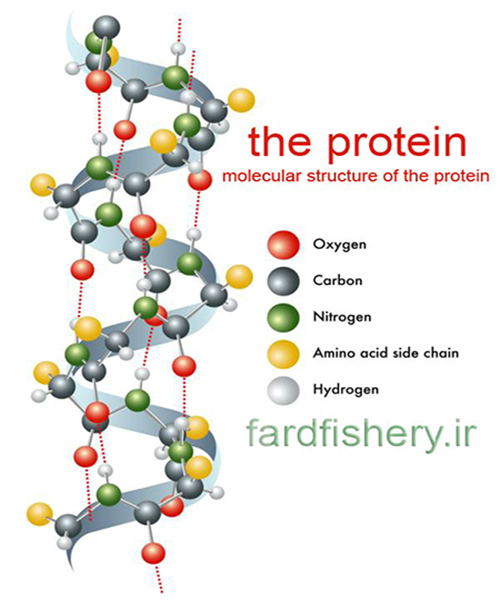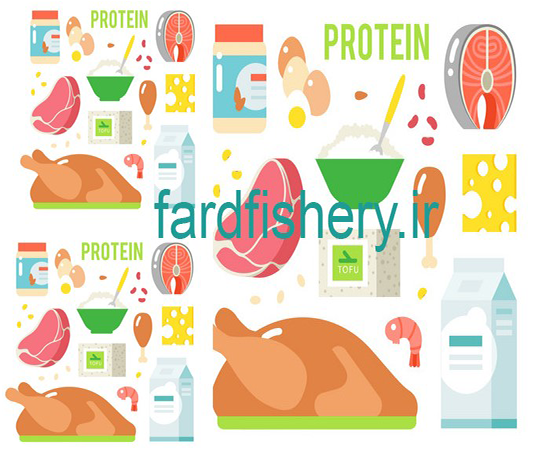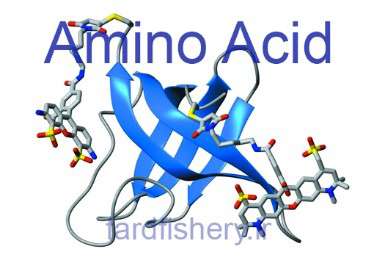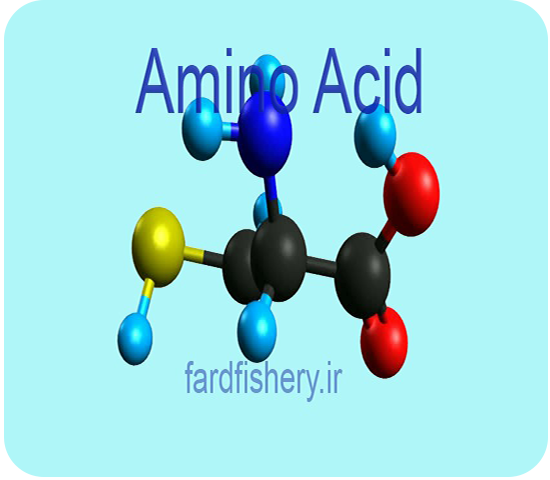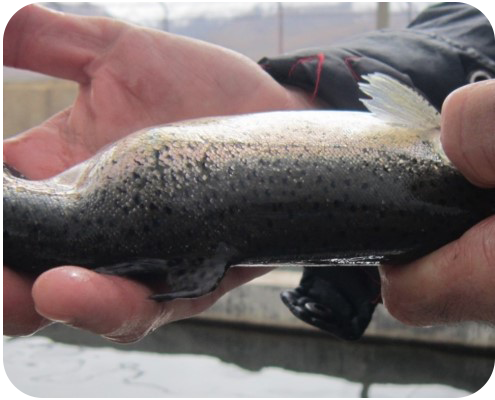Food components and nutritional needs in aquatic life
The nutrients in the aquatic diet are divided into two parts: energy-efficient and non-energy-nutrients. Proteins, fats (lipids) and sugars (carbohydrates) are energy-efficient nutrients and are one of the major elements in energy supply, while vitamins and minerals are non-energy components of the diet.
Proteins:
The most important chemical constituents are found in animals. These constitute the bulk of the animal’s body and in humans account for about half of the body’s dry weight.
Protein is derived from the Greek word Proteios meaning first, and this may indicate its importance.
Proteins consist of 53% carbon, 7% hydrogen, 23% oxygen and 16% nitrogen and less than 1% sulfur and phosphorus.
Proteins are also a major source of amino acids when needed. Proteins, in turn, are involved in the vital activity of the body for the growth of new tissues, the maintenance and restructuring of weakened tissues as well as constituents of specific biological substances such as enzymes.
Other functions of proteins include:
Precursors of hormones, enzymes, immunogenic molecules, softening and protective agents, anti-freezing and anti-heat shock agents and food absorbers
Amino acids:
Chemical breakdown of proteins yields various amino acids that are the final products of protein digestion. Although more than 200 amino acids are isolated from biological materials, about 20 of them form components of proteins. All amino acids are pure white in powder form and have weak but distinct odors.
The bond between amino acids to form proteins is a peptide type. If two amino acids are linked through a peptide bond, they are called a dipeptide. If the number of amino acids is 2 to 10, the resulting compound is called an oligopeptide, if the number of amino acids is between 10 and 50, the compound is poly the peptide is said to be a protein called a compound whose amino acids are more than 50 and their molecular weight exceeds 5,000.
In 1806, a compound was extracted from the extract of Asparagus called Asparagine.
The first and simplest amino acid was separated from protein in 1820 and named for its sweet taste, glycine.
Between 1820 and 1935, 18 other amino acids were discovered.
After 1935 no new amino acids were found in ordinary protein.
One of the important classifications in amino acids is their essentiality.
Amino acid segmentation:
- Necessary
- Semi-essential
- Unnecessary
Essential amino acids:
These are those that fish cannot synthesize and must be included in the diet.
The essential amino acids are:
Arginine, histidine, leucine, isoleucine, valine, lysine, methionine, threonine, tryptophan, phenylalanine
Vegetable foods lack two amino acids lysine and methionine, while these two amino acids are sufficient in animal foods. If the diet contains 30 to 50 percent of the protein in animal protein, it will be sufficient for the fish’s body needs.
Semi-essential amino acids:
The formation of these amino acids in the fish body depends on the presence of essential amino acids, such as the tyrosine, cysteine and hydroxy-lysine amino acids, for example.
Unnecessary amino acids:
The fish’s body is able to make these amino acids.
Non-essential amino acids include:
Alanine, aspartic acid, glutamic acid, hydroxyproline, glycine, serine and proline
Tip:
Unnecessary amino acids have a major role in making the diet enjoyable. However, excessive or unintentional use of a variety of amino acids in the aquatic diet can sometimes lead to a condition called amino acid antagonism.
What is antagonism?
Some of the amino acids are similar in structure and are similar in some respects to the fact that the body’s systems are compromised in their metabolism, meaning that consuming one amino acid may require another amino acid, which is called antagonism of amino acids such as leucine and isoleucine. – Arginine and Lysine – Cysteine and Methionine
Diet Tip: One of the ways to solve the problem of creating amino acid antagonism in aquatic diets is to use a variety of protein sources.
Some Complications of Amino Acid Deficiency in the Diet (Very Important)
Lysine deficiency leads to erosion of the fins
Methionine deficiency results in bilateral cataracts
Isolucin deficiency results in excessive loss
Arginine and phenylalanine deficiency leads to hormonal imbalance
Tryptophan deficiency results in lordosis and scoliosis

